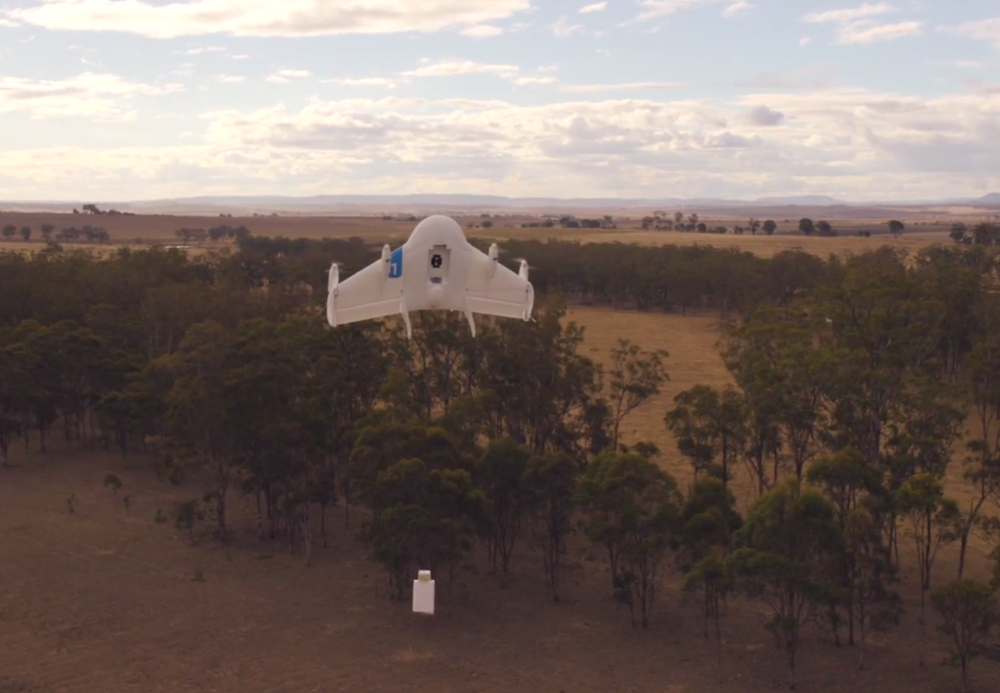
MOUNTAIN VIEW, California — Delivery drones could be arriving to your doorstep in a decade, one Google executive says.
The Google concept, called Project Wing, would enable people to get products delivered "in short order," even in the most populated areas, Dave Vos, the project's leader, said here today (July 29) at a NASA-sponsored conference on drones. Project Wing was first described publicly in August 2014, when test flights of early prototypes were conducted in Australia, The Atlantic reported.
In order to take to the skies, drones need to not only communicate with people on the ground, but also with other high-fliers that are delivering small packages, taking aerial surveys or doing other work, Vos said. [Photos from Above: 8 Cool Camera-Carrying Drones]
Key to this vision of a drone-filled future is the use of existing cellular phone infrastructure.
"We don't need to develop new protocols,” Vos said at the conference.
In his vision, drones would be outfitted with an automatic dependent surveillance-broadcast (ADS-B) receiver that would enable the unmanned fliers to communicate with each other, as well as with ground-based systems. Existing ADS-B systems in aircraft allow them to locate their position using satellites, and then rebroadcast that location to a ground-based station. This type of multi-way communication could enable the drones to avoid obstacles in midflight and fly safely to their destination, Vos said.
A drone equivalent of air traffic control systems will also be needed, Vos said. Google envisions cellular carriers and other private companies collaborating with the Federal Aviation Administration (FAA) to craft a drone air traffic safety system. The FAA has no clear rules on the use of small, low-flying drones by hobbyists, and only in late February granted approval for commercial drone test flights. According to the FAA's regulations, these commercial drones must always remain in the line of sight of the pilot during tests, according to the FAA rules. Currently, NASA is partnering with several tech companies to design a safe air traffic control system for drones.
Get the world’s most fascinating discoveries delivered straight to your inbox.
Project Wing also has a competitor in the retail giant Amazon, which is developing its own drone-based delivery system. At the same conference yesterday, Amazon unveiled a plan to control air traffic for commercial drones. Their idea involves restricting airspace between 200 and 400 feet (61 and 122 meters) high for small, high-speed, unmanned aircraft.
Follow Tia Ghose on Twitter and Google+. Follow Live Science @livescience, Facebook & Google+. Original article on Live Science.

Tia is the editor-in-chief (premium) and was formerly managing editor and senior writer for Live Science. Her work has appeared in Scientific American, Wired.com, Science News and other outlets. She holds a master's degree in bioengineering from the University of Washington, a graduate certificate in science writing from UC Santa Cruz and a bachelor's degree in mechanical engineering from the University of Texas at Austin. Tia was part of a team at the Milwaukee Journal Sentinel that published the Empty Cradles series on preterm births, which won multiple awards, including the 2012 Casey Medal for Meritorious Journalism.


